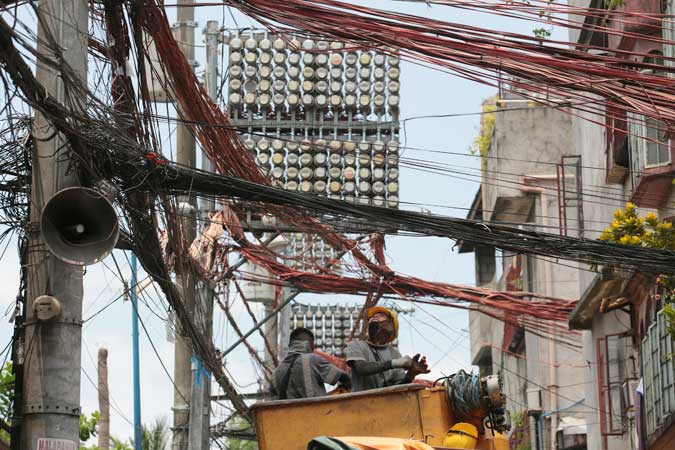ERC task force to look into plant outages, price spike

A TASK FORCE will look into the recent power plant outages and the subsequent surge in spot market prices, the energy regulator said on Monday.
The Energy Regulatory Commission (ERC) said in a statement that the task force already identified four generation plants which need to undergo technical inspection to verify the outages and the actions taken to get back online.
ERC Commissioner-in-Charge Floresinda G. Baldo-Digal told BusinessWorld on Viber that these four facilities are TeaM Sual Corp.’s Sual coal plant (unit 2), AP Renewables, Inc.’s Makban geothermal plant (unit 2), GNPower Mariveles Energy Center Ltd. Co.’s Mariveles coal plant (units 1 and 2), and the Sem-Calaca Power Corp.’s Calaca coal-fired plant (unit 2).
She said that the task force named these four plants after rotating outages hit portions of Luzon last week. Earlier, the National Grid Corp. of the Philippines (NGCP) placed the Luzon grid under red alert for three consecutive days amid plant outages and higher recorded temperatures.
On Monday, the ERC said the group is also looking at identifying the plant compliance with respect to their outage reporting and reliability indices; analyzing hourly market data and the factors which lead to price increases resulting in the imposition of the secondary price cap (SPC), among others.
The SPC, according to the Independent Market Operator of the Philippines, is a price-mitigating mechanism designed to limit the “persistent high market prices” in the electricity spot market.
“The power supply shortage during the summer months has been a perennial problem, and the regulator has been monitoring the situation from day one…. The Commission has been undertaking all the necessary efforts to help mitigate, if not totally address this recurring challenge,” ERC Chairperson and Chief Executive Officer Agnes VST Devanadera was quoted as saying.
The ERC also said it will be issuing show-cause orders to generation companies (gencos) that failed to comply with the reporting requirements.
The agency ordered gencos last week to explain plant shutdowns after noting that some of these firms have exceeded the maximum limit of allowable unplanned outages in April.
PROBE SOUGHT
Consumer group Laban Konsyumer, Inc. (LKI) said the Anti-Red Tape Authority (ARTA) should be the autonomous entity to investigate the power plant outages.
“Laban Konsyumer is batting that ARTA should be the independent prober…. The investigation by ARTA should include all the 17 power plant owners earlier issued notices of violation by the ERC. ERC should defer to ARTA to ensure the probe by an impartial judge,” LKI President Victorio A. Dimagiba said in a statement issued on Saturday.
He added that the Department of Energy (DoE) should also be “part of the entity to be investigated.”
In April, the energy department said that it does not expect any red alerts to be placed on the Luzon grid during the dry months, adding that yellow alerts are likely to happen until July.
But on Friday, the DoE said that red alerts are likely to happen this week if power plants do not return to service, based on its estimates.
When reserves fall below ideal levels, the grid operator issues a yellow alert. This is downgraded to a red alert if the supply-demand balance worsens.
Meanwhile, a senator filed a resolution on Monday seeking to conduct an investigation over the failure of the concerned government agencies to lower power rates in the country.
In a statement, Senator Risa N. Hontiveros-Baraquel said she filed Senate Resolution No. 746 which sought to determine the deficiencies and failures of the ERC and DoE to bring down power rates, on top of the other objectives to ensure quality and security of electricity supply, 20 years after the enactment of the Republic Act No. 9163 or the Electric Power Industry Reform Act (EPIRA) on June 8, 2001.
Ms. Baraquel said the resolution would also try to look at the feasibility of reducing power rates by at least P2.00 per kilowatt-hour. — Angelica Y. Yang and Vann Marlo M. Villegas
